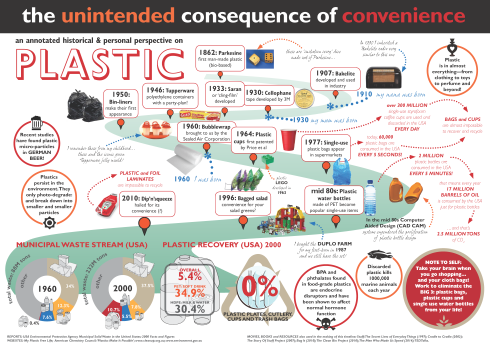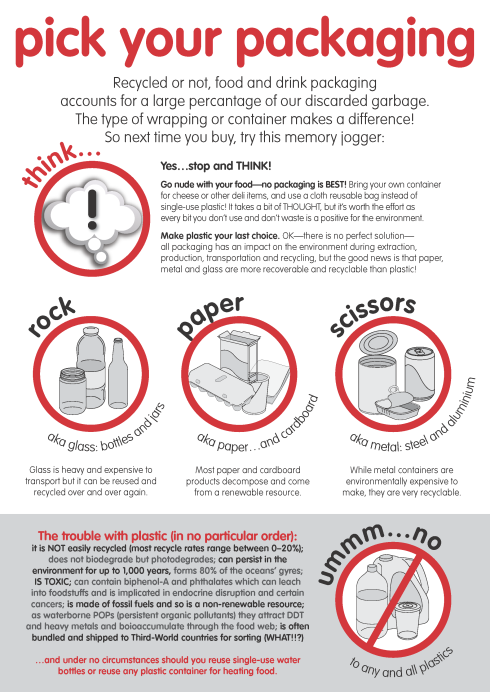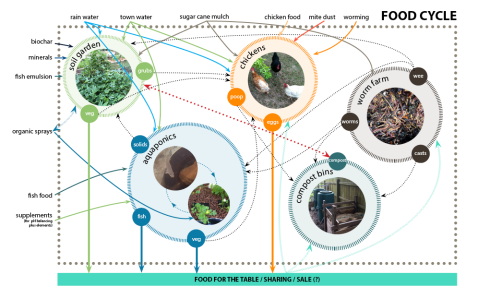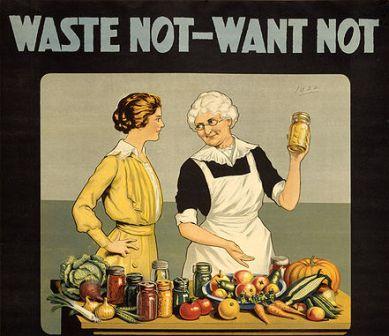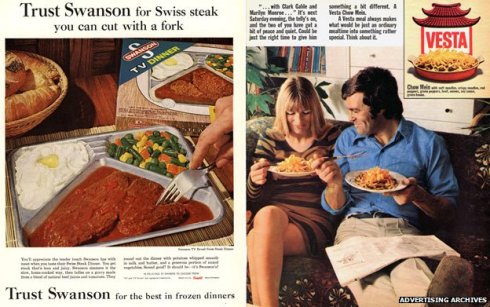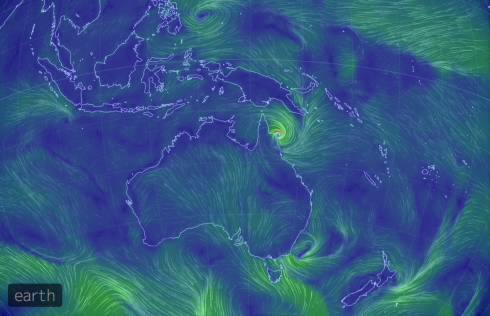I have been a bit neglectful of this blog, but maybe with the end of semester and the quiet period which usually happens around Christmas-time (for my work) I actually may be able to get the pile of reading done and get some more ideas down on this page.
My reading list includes (but is not limited to):
- Naomi Klein: This Changes Everything
- Paul Ehrlich: One with Nineveth
- Russell Brand: Revolution
- Simon Sinek: Start with Why
- Jared Diamond: Guns, Germs and Steel
- Jared Diamond: Collapse
- Mark Lynas: Six Degrees
- Clive Hamilton: Growth Fetish
- Helena Norberg-Hodge: Ancient Futures
…plus anything else I have listed here earlier and not got to 😦
And I still have to finish the Yale Online course by Kelly Brownell: The Psychology, Biology and Politics of Food (see: http://oyc.yale.edu/psychology/psyc-123)
So, in the meantime, here is the essay: the communications strategy that I wrote for my last assignment for this semester. I have taken the liberty of slightly editing it (to my horror, after it was submitted and marked, I reviewed my work and found at least three literals 😦 )
I hope you find something that inspires you!
Task 3: Communications Strategy SUS 202
To develop an effective trans media communications strategy that informs public action, it is best to devise a holistic approach that touches on the facts of, debate about, and action for the sustainability issue at hand (Newig et at. 2013).
By combining the principles of social marketing, (French 2009), psychological and behavioural change research (Reynolds 2010, Sharp et al 2010, Cialdanni et al. 1981, Crompton & Thogersen 2009 and McKenzie-Mohr 2000) and sustainability communication theory (Cox 2007, Futerra 2005, Moser 2010, and Nisbet & Scheufele 2009) it is anticipated that the following strategy will deliver positive behavioural change within the target group: making them more food aware and less wasteful.
The Food for Thought Campaign
The issue: Food waste
According to the Food Waste Avoidance Studies 2010 ‘People waste food because they buy and cook too much, don’t finish their meals, and don’t store food correctly’ (Sustainability Victoria 2011). Other contemporary studies show that landfill comprises up to 62% of organic materials (Closed Loop 2014), with significant contribution coming from Australian households—only 33% of the Australian adult population composts or recycles food waste all or most of the time[1] (ABS 2007). Domestic food waste has significant environmental, social and economic implications, which can and should be addressed.
Communications goals
The ultimate goal of this communication strategy is to change attitudes and behaviours of individuals towards food and food waste and further to influence individuals’ actions and decision making about the foods they buy, cook, consume and discard. Modelled on the work reported by Sharp et al. (2010 p 257)—specifically the NLWA campaign, it is predicted that attitudes and behaviours will change in a meaningful and measurable way.
While it is planned as a seeding project, it is hoped that resources developed and made available both at delivery (guest presentation) and mirrored online, will endure over time, enabling the target audience to use and distribute the resources and in effect become messengers in their own right.
Target audience
Research has shown that a significant proportion of Australian adults (41%) are unaware of the impacts of organics in landfill (Closed Loop 2014). While it would be desirable to design a campaign to connect with all Australians, this strategy proposes to engage at the community level with service groups (Rotary, Lions and Apex). Perhaps this group can become what Kevin Allocca (2010), Trends Manager at YouTube, describes as ‘Tastemakers’: those who will introduce the insights of this campaign to a larger audience.
According to surveys and audits conducted by the Victorian Government (Sustainability Victoria 2011), three of the top four groups of food wasters include households with incomes more than $130K per annum, households with incomes of $65–80K per annum and families with children. The service group demographic captures all three of these identified segments.
As service group members, the target audience is already one receptive to ideas of improvement, positive, lasting change, and social justice. This group will include men and women who range in age from 18 to 80+.
Framing
Reynolds (2010) echoes the assertions of Newig (2013) when he states that ‘telling people what to do is, usually, not enough. Nor is informing them why they should do it’ (p. 42). Further, ascertaining beliefs, motivations and behaviours, understanding the environment in which the audience lives, and building a package of opportunities, services and support that responds to their real-life wants and needs, enables the adoption of new, socially beneficial behaviours (Kotler & Zaltman 1971). For this service-based oriented audience, the framing of the ‘Food for Thought’ campaign will be based on social progress lines: highlighting positives the audience can use in their daily lives, that can be shared with others and that will deliver ‘triple-bottom line’ benefits (social, economic and environmental) for all.
Key messages
According to Warde (2005) consumption patterns are seen as embedded within social practices and not seen as a result of individuals’ attitudes, values and behaviours. The issue should be framed in a way that informs and empowers the audience: for them to take control and to question the status quo (do we even recognise that we are wasting so much food and what the implications are?). To know and to do and to effect change will be powerful. By focusing on enabling action through practical and achievable lifestyle tips rather than as an exhortation or instruction simply about waste (Sharp et al. 2010) should convey a sense of helpfulness in the presentation.
A personal narrative journey will be woven around three key messages that will create a strong focus for the campaign, and allow for extra, reflection within audience. The chosen messages are:
- ‘Knowledge is powerful and transformative’
- ‘Every little bit counts’
- ‘Be challenged: look for the improvements’
The beauty of these messages is that they can be transposed onto other sustainable lifestyle issues for example energy and water use, and single-use plastics.
Messengers
As detailed in Sharp et al. (2010 p 256), ‘engaging enthusiastic champions as part of the process early on is deemed a key success factor…to help develop social norms’. The ‘Food for Thought’ campaign hinges on the delivery of information by a food waste evangelist who can be identified by the target audience as ‘one of their own’—chosen from the same general demographic. According to Fenton (2001), a trusted messenger will be the most persuasive. The material has core messages and will follow a narrative arc, but the presentation, by its very nature will be able to be tailored by any individual who is passionate about the issue and wants to share their own journey.
Modes and tools
As studies have shown (Sharp et al. 2010) behaviour change is most impacted by a campaign based on a collection of tools and measures. While this campaign has a guest presentation at its core, supporting, ancillary materials will also be made available.
Conducted over five weeks for each group, the campaign takes the following form:
1) Pre-presentation survey: Week 1
An information-gathering survey will be designed and distributed a week in advance for audience members to complete and bring along on the night. This will help inform the presentation and prepare the audience.
2) Presentation 1: The Introduction and Challenge: Week 2
The core component of the strategy is a guest presentation, as per the time and format of the chosen service club. Typically this is a 10–20 minute timeslot with a further 10 minutes for questions and answers. Depending on the presenter and the facilities available, the following is a list of presentation aids that can be used:
- a quick ‘Go Soapbox’ session designed to include the audience via smartphone participation in real-time data gathering on pre-presentation attitudes and opinions.
- Powerpoint or Prezi presentation — a narrative based on personal experience and practical advice for addressing food waste supported by sourced food waste facts and figures.
- Point specific info graphic postcards which include blog/website details and Twitter hashtag information.
3) The challenge: Weeks 3–4
Willing participants register to participate in a two-week challenge to monitor their ‘normal’ base-line food waste for a week and then to implement thoughtful food practices for a subsequent week and report their responses. The challenge will be delivered either as hard-copy or online survey thus catering for audience preference and access. Participants will be prompted via email to help manage the process. A dedicated blog/website will serve as a focal point for ongoing questions and answers.
4) Presentation 2: Revelations, insights and discussions: Week 5
As this campaign is designed to inspire and engage on a personal level, it is only fitting that results from the challenge and insights gained by the participants be shared with the group. It is essential that issues of privacy be observed, but both quantitative data from the challenge be graphed and presented, and with permission, qualitative observations shared. What is hoped is that participants will be inspired to seek answers to bigger picture questions involving legislation around food labeling and opportunities for waste collection.
5) Online and other resources: From Week 1 and ongoing
All info graphics will be designed into a set of postcards that will be available at the presentation and also distributed via Avante Card (if, for no other reason, than to reach a wider audience). These same graphics will be made available for distribution as individual graphics on FaceBook and attached to the blog/website where all info graphics will be available (to download and print or to share). This blog/website will also serve as a central hub for useful links to other resources on food waste and other relevant sustainability topics. These will include, but are not limited to, book reviews, courses, documentaries, TEDTalks and websites.
PDFs of the info graphics could be further used to illustrate a series of ‘Letters to the Editor’ for local newspapers and/ or made available as part of a feature article in the organisation’s newsletter or magazine.
Monitoring and evaluation
Because of the design of the campaign which includes feedback at the time of the presentation, and data as gathered in the form of the challenge, it should be easy to see the impact of the campaign on the core target audience.
Data will also be able to be monitored as to impact based on the number of hits on the blog/website, the number of tweets on the presentation and also the tracked as distribution of single-issue info graphics as shares on FaceBook and beyond.
Reynolds (2010, p. 45) suggests that ‘engagement in a new behaviour can fundamentally alter how we perceive ourselves’. This is surely the enduring hope of those who work to promote sustainability issues. It is anticipated that through the ‘Food for Thought’ campaign, real and lasting new behaviours will result—and maybe from that, engender a greater understanding of ourselves as thoughtful citizens—open to tackle other sustainability challenges in ours lives.
References
Allocca, K ‘Why videos go viral’ 2011 TEDYouth Filmed Nov 2011 http://www.ted.com/talks/kevin_allocca_why_videos_go_viral/transcript?language=en
Australian Bureau of Statistics (2007). 4102.0—Australian Social Trends, 2007 Household waste Available from: http://www.abs.gov.au/AUSSTATS/abs@.nsf/Latestproducts/
E1E64A4DB813BC8BCA25732C00207FF7?opendocument
Cialdini, RB, Petty, RE & Cacioppo (1981) ‘Attitude and attitude change’ Ann. Rev. Psychol. 32, 357–404
Closed Loop (2014). Australia’s attitudes to compost—survey April 2014
Available via download from http://www.closedloop.com.au/uk/news-and-events/australian-attitudes-towards-composting
Cox, R (2007). ‘Nature’s “Crisis Disciplines”: Does Environmental Communication Have an Ethical Duty?’ Environmental Communication, 1 (1) 5–20, DOI: 10.1080/17524030701333948
Crompton, T, & Thogersen, JB (2009). ‘Simple and Painless? The Limitations of Spillover in Environmental Campaigning’. Godalming: WWFUK, Available at http://www.wwf.org.uk/
Fenton Communication (2001). Now hear this: the nine laws of successful advocacy communication [online] http://web.undp.org/comtoolkit/whycommunicate/docs
/Tools/NowHearTheNineLawsofSuccessfulAdvocacyCommunications.pdf
French, J (2009). ‘The nature, development and contribution of social marketing to public health practice since 2004 in England’ Perspectives in Public Health, 129:262
DOI: 10.1177/1757913909347665
Futerra Sustainability Communications Ltd. (2005). Communicating sustainability: how to produce effective public campaigns. UNEP/Earthprint.
Kotler, P, Zaltman, G (1971). ‘Social marketing: An approach to planned social change. Journal of Marketing 35, 3–12
McKenzie-Mohr, D (2000). ‘Promoting Sustainable Behavior: An Introduction to Community-Based Social Marketing’ Journal of Social Issues, 56(3), 543–554
Moser, SC (2010). Communicating climate change: history, challenges, process and future directions. Wiley Interdisciplinary Reviews: Climate Change, 1(1), 31–53.
Newig, J, Schulz, D, Fischer, D, Hetze, K, Laws, N, Lüdecke, G & Rieckmann, M (2013). ‘Communication Regarding Sustainability: Conceptual Perspectives and Exploration of Societal Subsystems’ Sustainability, 5, 2976–2990 doi:10.3390/su5072976
Nisbet MC & Scheufele, DA, (2009). ‘What’s next for science communication? Promising directions and lingering distractions’ American Journal of Botany 96, 1767–1778 doi:10.3732/ajb.0900041
Reynolds, L (2010). ‘The sum of the parts: Can we really reduce carbon emissions through individual behavior change?’ Perspectives in Public Health, 130: 41
DOI: 10.1177/1757913909354150
Sharp, V, Giorgi, S & Wilson, DC (2010). Delivery and impact of household waste revention intervention campaigns (at the local level) Waste Management & Research 28, 256–268 DOI: 10.1177/0734242X10361507
Sustainability Victoria (2011). Victorian Statewide Garbage Bin Audits: Food, Household Chemicals and Recyclables Available online via http://www.sustainability.vic.gov.au/
Warde, A (2005). ‘Consumption and theories of practice’ Journal of Consumer Culture 5 (2), 131–154.
[1] while the same study showed that 84% of Australians sorted recyclable from no-recyclable waste all or most of the time

